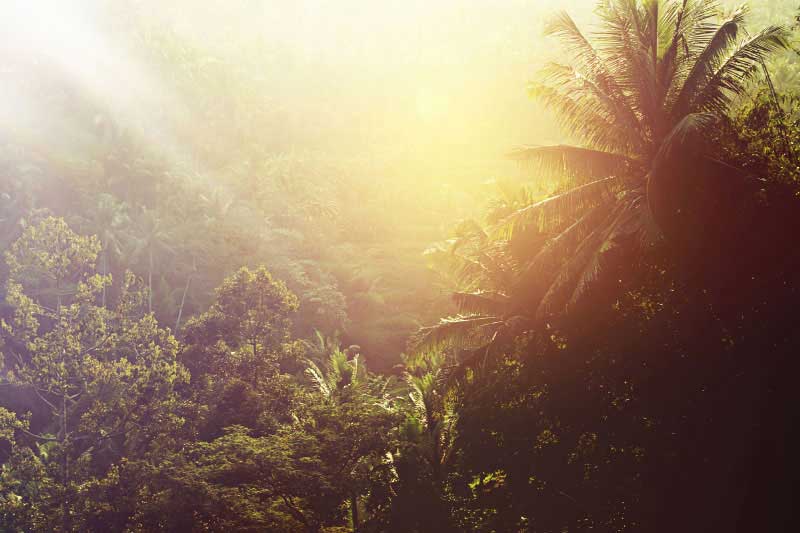Rethinking Reptile Lighting - Part 4

A Natural History Approach to Reptile and Amphibian Lighting
Often, we base husbandry practices on common sense and what has proven to work in the past, and many keepers provide specialized lighting only for species that need it to survive. Success in keeping reptiles and amphibians is often defined as being able to raise animals in captivity that appear healthy, and that hopefully breed and produce healthy offspring. Based on this success, the conclusion is drawn that if they can grow and reproduce without access to UVB, they must not need it. But this logic completely ignores the fact that many of these reptiles are exposed to UVB in their natural habitat, and new research shows that they do indeed benefi t from UVB exposure. Some species have been kept with apparent success without access to UVB, including nocturnal lizards; reptiles, such as snakes and varanids, that eat whole vertebrate prey; and amphibians. If we were to take a different approach and choose their lighting based on their interaction with light in nature, however, we would provide most of these species with UVB. Many of the species that are classified as “nocturnal” are also crepuscular (active at dawn and/or dusk), and crepuscular behavior patterns often result in exposure to low levels of sunlight and UVB.
UVB for Nocturnal Species
Herpetologists have often come across nocturnal species at dusk when low levels of UVB are present. In “Diurnal Activities of a Nocturnal Animal,” a 1952 article published in the journal Herpetologica, noted herpetologist Bayard Brattstrom makes the following remarkable statement: “The increasing mass of evidence regarding the function of the pituitary gland of animals in relation to solar radiation and sexual and other associated cycles, and the known importance of vitamin D and other physiological factors associated with absorption of solar radiation, would seem to make desirable the report of instances of diurnal activity observed in supposedly nocturnal animals. This is especially true for the species of terrestrial animals that habitually live underground during daylight hours, and which by means of protrusion of the head alone could presumably receive adequate dosages of light suffi cient to induce such responses as reported for birds and mammals.” In this article, Brattstrom describes the observation of a desert banded gecko (Coleonyx variegatus variegatus) during the late afternoon when the sun was still above the horizon. I, too, have observed this species active during the late afternoon in Phoenix. The important message is that nocturnal species occasionally expose themselves to UVB on purpose, and that this limited exposure to UVB may be enough to support a healthy vitamin D condition. Nearly 50 years after Brattstrom’s observation, a study on house geckos revealed that this nocturnal/crepuscular species is extremely effective at synthesizing vitamin D with very little UVB exposure (Carman et al., 2000). Based on these findings, it seems that for nocturnal and crepuscular species of reptiles, it is logical to recommend the use of lamps that provide low levels of UVB comparable to the levels found at dusk. In addition to providing a proper photoperiod, the lamps can also provide necessary UVB for vitamin D synthesis. Even if they only expose themselves to the light for short periods of time, that doesn’t mean that animals don’t benefit from the light. We use a toothbrush for only a few minutes each day, but imagine living without one!
What About Snakes and Amphibians?
With amphibians, UVB has often been the subject of controversy as it has been implicated as a potential cause of amphibian decline. Indeed, too much UVB is harmful to any animal, and different species have differing tolerances for safe UVB exposure. As amphibians have become the focus of intensive captive-breeding projects, many zoos and breeders have found that low levels of UVB are necessary in order to maintain and breed various species. Breeders of dart frogs regularly use UVB lamps, and breeding projects involving the endangered Panamanian golden frog (Atelopus zeteki) also employ the use of UVB lamps with great success. Even though many snakes can be raised and bred in captivity without the aid of UVB, the fact remains that most snakes receive UVB exposure in nature. There are many reports of snake activity when the sun is still out for species that are considered nocturnal. Some snakes, including rattlesnakes, racers, gopher and bull snakes, and garter snakes, are strongly diurnal and expose themselves to strong levels of UVB. Previously, the majority of the UVB studies on reptiles dealt mainly with lizards, but a recent study on corn snakes (Elaphe guttata) revealed that they, too, appear to have the ability to synthesize vitamin D upon exposure to UVB (Acierno et al., 2008). As discussed earlier, UVA and UVB are also important in vision, behavior, reproduction and immune response. Due to the abundance of snakes bred in captivity, and their popularity as pets, they would seem to be an important group for future studies involving UVB and UVA radiation in the field of photoherpetology.
In Closing
As our knowledge of the UVB and lighting requirements of reptiles and amphibians grows, so will our ability to provide for their needs in captivity. When positioning UVB lamps over terrariums, be sure to follow manufacturer recommendations for appropriate lamp distances, and observe the behavior patterns of your reptile or amphibian. Take notice of unusual behaviors that may indicate that the lamp is too close or too far. Continual avoidance of the light for species that commonly bask is a good indication that the lamp is too close or too strong for that particular application. On the other hand, if an animal continually basks and exposes itself to UVB, without occasionally retreating to perform other natural behaviors, this may be an indication that the lamp is too far or that a stronger UVB lamp may be desirable. Care should be taken to ensure that a UVB gradient is provided and that the reptile or amphibian can retreat to a shelter where no UVB is present. This will allow them to photoregulate and adjust their exposure to UVB, just as they do with heat through thermoregulation. The next time you set up a new habitat for a reptile or amphibian, take some time to research the natural history and behavior patterns of that species. Not only will this information prove to be interesting, it will also aid in helping you make an educated choice on the proper lighting requirements from a natural history perspective.
I would like to thank Dr. John C. Dowdy (Rapid Precision Testing Laboratories), Dr. Gary Ferguson (Texas Christian University) and Andy Quinn (Zoo Med Laboratories) for reviewing this article and providing valuable comments. I would also like to thank Gary Bagnall for inspiring my interest in herps at an early age.



